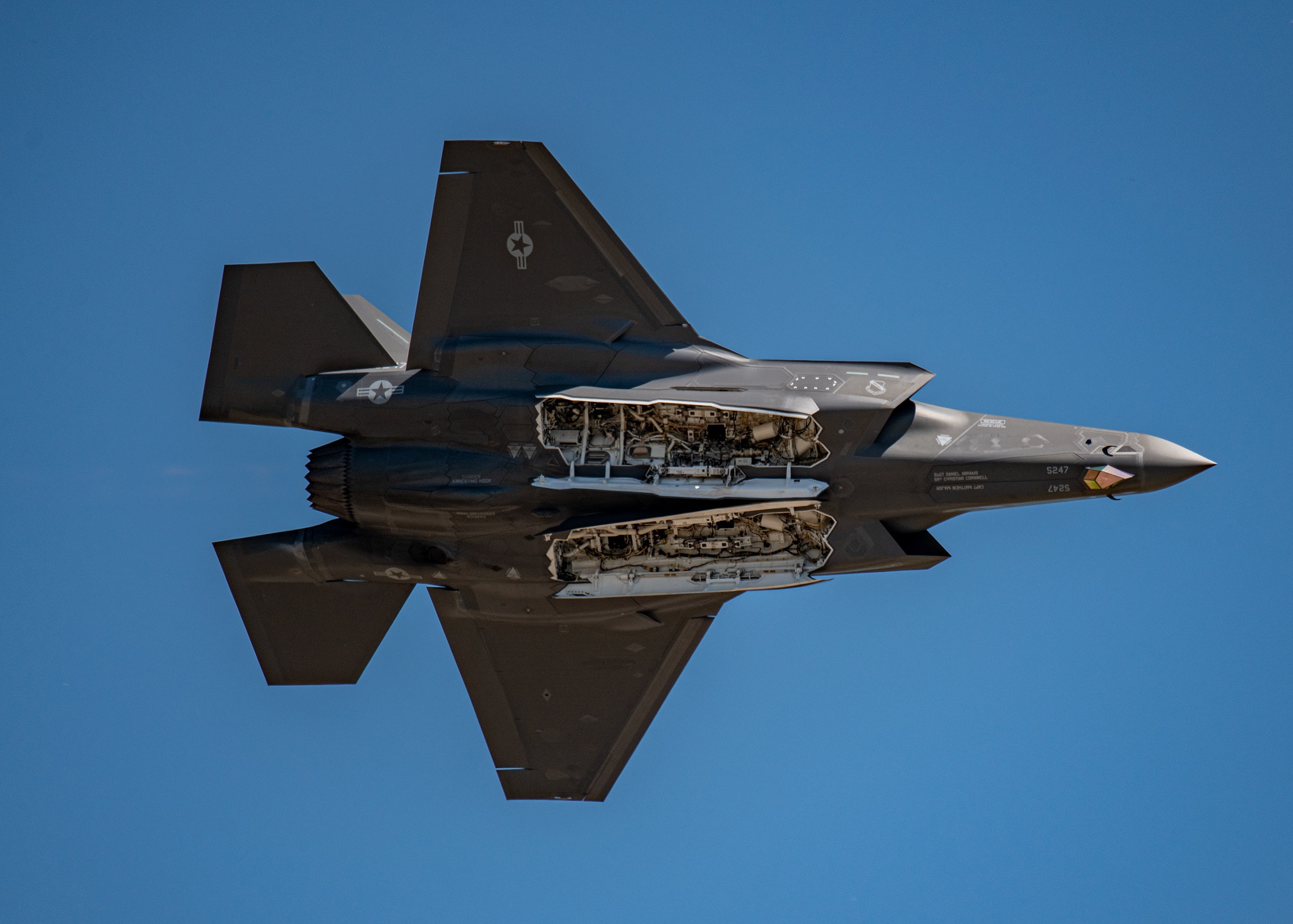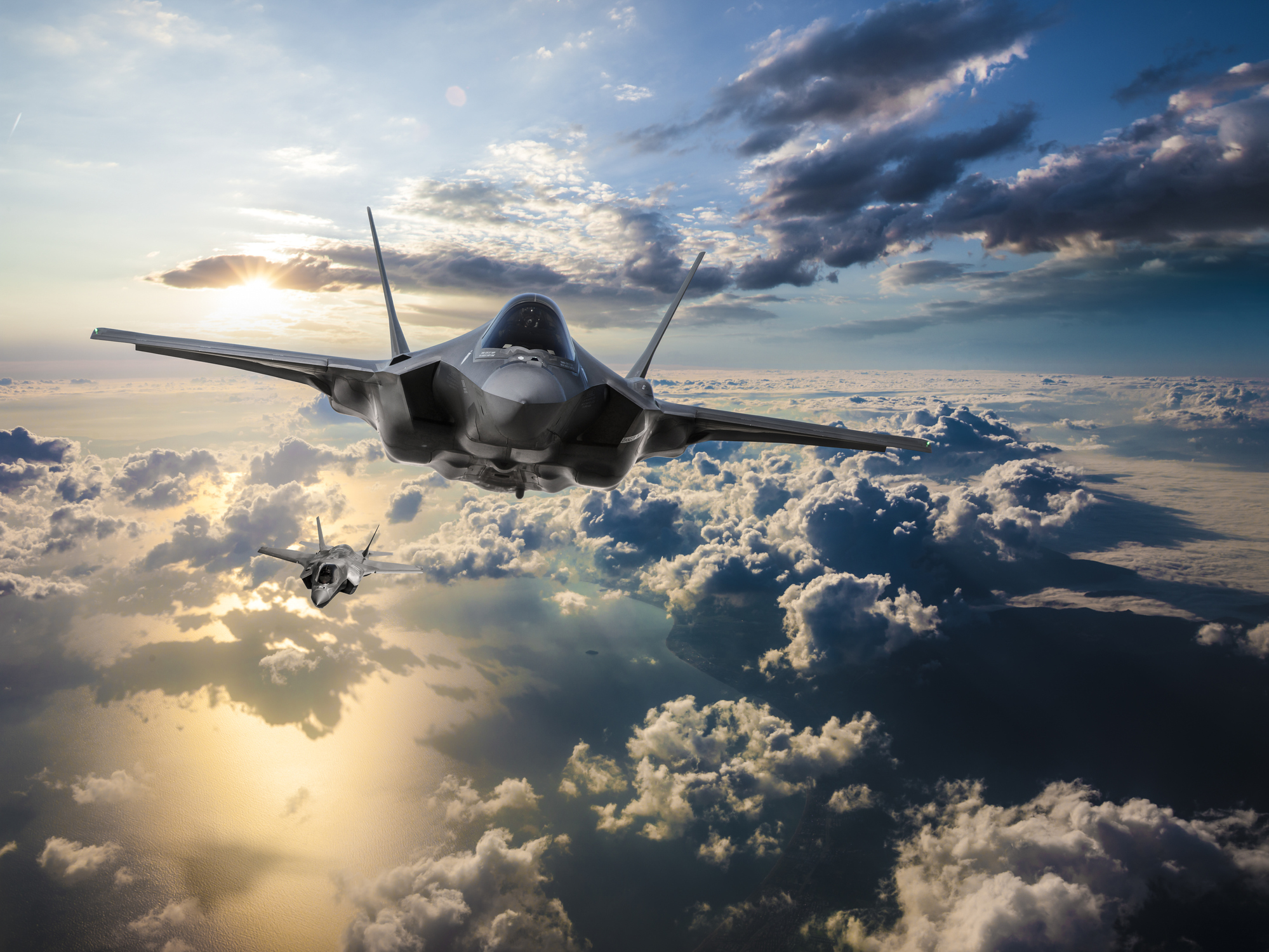An Asq 239 - Lightning Reflexes 07 October 2019 Dr. Thomas Withington "...the aircraft has radar warning receivers on the leading edge of its wings covering frequencies in bands 2, 3 and 4. Two RWRs are located near the band-3/4 wingtips. The rear wing with additional RWRs comprising strip 2 on either side of the aircraft exhaust and trailing edges of the rear horizontal stabilizers. Provides full 360° coverage for the aircraft. Although the aircraft is currently equipped for emitter detection, RF is configured in Bands 2, 3, and 4, with the potential to grow to include Band 5 threats in the future. Although no details have been released publicly, AN ASQ-239 It is believed to detect anti-missile radars that transmit from the 2 GHz to 20 GHz band. Enhancements to the AN/ASQ-239 come through a series of block enhancements that add a higher level of capability to the anti-missile defense system. Source: https://armadainternational.com/2019/ 10 .. -Reflex/
Spazsinbad wrote: SUBJECT: AN/ASQ-239 , ALR-94 capabilities viewtopic.php?t=20529 STUFF: https://www.reddit.com/r/Dragon029/comm ... re_quotes/ Some YADAyadaYaDah: https: / /www.reddit.com/r/Dragon029/comm ... re_quotes/ Thunder Thunder October 07, 2019 Dr. Thomas Withington "...the aircraft has radar warning receivers on the leading edge of its wings that transmit a frequency covering bands 2. Although the aircraft is currently configured to detect RF emissions in bands 2, 3 and 4, it has the potential to grow to include band 5 threats in the future. AN/ASQ- 239 May “It detects anti-radar transmissions in the 2 GHz to 20 GHz frequency band. The AN/ASQ-239 block comes with a series of enhancements that give the self-defense system a higher level of capability." Source: https://armadainternational.com/2019/10 ... -reflexes /
An Asq 239

Thanks, but I don't think this range is accurate as the much older and smaller ANASQ-213 on CJ has a bandwidth range of 0.5-20GHz.
Which Nation Has The Superior Stealth Fighter — Russia's Su 57 Or China's J 20?
Nobody knows; "Band 2", "Band 3", etc. specifications are for internal application use (they do not conform to any IEEE, ITU, etc. definitions and are similar to other "Band 3" etc. specifications. Applications are inconsistent).
Personally, I expect band 2 to be VHF and maybe lower UHF (eg: 100 MHz to 1 GHz), maybe band 3 UHF / SHF lower (1 GHz-8 GHz or something) and band 4 to be intermediate. SHF (8 -20 GHz). .
1. I consider high priority threats. ASQ-239 is the F-35's RWR, so it *must* cover at least X-band (up to 12 GHz) (and possibly Ku-band as well to protect against Ku-band missile seekers). SAM detection, which may be limited to only S- and X-band fire control radars, but prevents an F-35 pilot from navigating around VHF search radars, is a huge oversight (and in some ways). less capacity compared to older aircraft).
2. The F-35's CNI system only has straight-up and straight-down L-band arrays, and even though they are short-range, omnidirectional antennas, they have trouble providing IFF interrogation (at 1 GHz) for targets. With that on the horizon, I think the ASQ-239 will use/share a range with the CNI set for that. Maybe band 2 arrays are only for UHF and not below 900 MHz (say) but to fill the gap to band 3, while still having a center frequency of 1 GHz or less, I expect that to be covered. It covers most or all of the UHF band and goes into the VHF band.
Decoded! Why China's Stealth J 20 Jets Are Unlikely To Engage In Direct Combat With Rafale, F 35 Fighters
3. We understand that the ASQ-239 may gain "Band 5" capability in the future. I expect it covers the upper Ku band, millimeter wave frequencies.
4. If band 2 is present, we can assume that band 1 is also present. As I am not aware of any mobile HF radar of a resolution and range that would provide real help, I would expect it to be in the HF band and below. Stealth aircraft do not need to detect stationary HF radars (such as various OTH radar installations around the world) to detect the F-35 because they don't go anywhere and other ELINT / IMINT systems can detect them in space or far from the front. and locating any new OTH radar installations.
[quote="Dragon029"]No one knows. "Band 2", "Band 3", etc. specifications are for internal application use (they do not conform to any IEEE, ITU, etc. definitions and are similar to other "Band 3" etc. specifications. Applications are inconsistent). [/quote]

I am very conflicted about this, on the one hand Band 2, Band 3, Band 4 have no definition and this definition can be used for classification purposes. Alternatively, if this specification is only used for the F-35 program, shouldn't it start at Band 1?
Electronic Warfare: Electronic Protection & Attack
The ALQ-218 uses a frequency range specification, but starts at band 0 and only goes up to band 3.
How old is an/asq-239? I like to throw in the EA-18 for reference because it is useful for operations with the F-35.
"Hard times make strong men. Strong men make good times. Good days make weak men. And weak men make hard times."
Underscan wrote: how old is an/asq-239? I like to throw in the EA-18 for reference because it is useful for operations with the F-35.
Lockheed Martin F 35 Lightning Ii
Eloise wrote: I am very conflicted about this, on the one hand Band 2, Band 3, Band 4 have no definition and can use this definition for classified purposes. Alternatively, if this specification is only used for the F-35 program, shouldn't it start at Band 1? The ALQ-218 uses a frequency range specification, but starts at band 0 and only goes up to band 3.
I'm chasing a lead, but I've seen an official table (now trying to find the source) that describes Band 0 as the C & D bands (500 MHz to 2 GHz) and Band 1 as E. Bands & F (2-4 GHz), Band 2 as G & H (4-8 GHz) etc., but this does not mean "Band-1" or any VHF band not given by him. If these bands were applied to the F-35, it would mean no L or S band receivers for the ASQ-239, which (even ignoring VHF) would be a huge gap in capability. Heck, according to the EA-18G slide you posted, that means the ALQ-218 can't detect VHF radars (which the underscan slide shows it's designed to counter).
Although it's not a table I've seen, here's one from Electronic Warfare Fundamentals that gives the same explanation:

So I'd say the AN/ASQ-239 covers more (not less) frequencies compared to other (and especially older) EW/RWR systems.
S.h.i.e.l.d. Fa 70 Panther 2 By Bagera3005 On Deviantart
Ricnunes wrote: eloise wrote: AN/ASQ-239 What is the frequency range? Can it detect VHF, HF radar? Watch min 1:12 (and after) of the video below: Then compare with: Personally, I believe it says a lot. Then on the manufacturer's website, we can read the AN/ASQ-239 entry here: https://www.baesystems.com/en-us/produc ... ure-system The following: Enhanced situational awareness for 360-degree space combat view So other (and I'd say the AN/ASQ-239 covers more (not less) frequencies, especially compared to older) EW/RWR systems.
I don't think you can just use a marketing video and link to an unrelated image. Furthermore, red to purple indicate different frequencies and do not correspond to a specific frequency. Especially since video and images come from different sources, it is very difficult to connect the two.
Disconnectedradical wrote: I don't think you can just use a marketing video and link it to an unrelated image. Furthermore, red to purple indicate different frequencies and do not correspond to a specific frequency. Especially since video and images come from different sources, it is very difficult to connect the two.
The "marketing video" makes it clear that the Barracuda listens to the wideband radio spectrum and listens to all of the radio spectrum, represented by red in the lowest radio spectrum to purple in the highest radio spectrum.
Advanced Electronic Warfare Capability Gives The F 35 Another Cutting Edge
Despite being a "marketing video", as you say, there is no reason to believe that BAE "lied on video" about this.
The older EW/RWR has been shown to be able to hear a wider range of the radio spectrum, so it would be silly if the F-35 Barracuda didn't hear over a wider area compared to the older systems.
And I don't think we should be overly pessimistic about what the F-35 will do, and more importantly, I don't think it's reasonable to expect the F-35 to perform any better than the older planes, or expect it to. Worse than older planes to perform well

I think we should really be more optimistic about what the F-35 will do especially with the electronics/sensors/etc...if we don't.
F 35b Lightning No. 617 Squadron Dambusters Raf
Asq membership, an asq 213, asq, an asq, asq login, an asq 173, what is an asq, an asq 236, asq recertification, an asq 228, 239, an asq 228 atflir
0 Comments